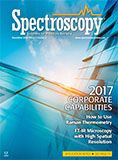International Centre for Diffraction Data
Company Description
ICDD is a non-profit scientific organization dedicated to collecting, editing, publishing, and distributing powder diffraction data for the identification of crystalline materials. Our mission is to continue to be the world center for quality diffraction and related data to meet the needs of the technical community. We promote the application of materials characterization methods in science and technology by providing forums for the exchange of ideas and information. We sponsor the Pharmaceutical Powder X-ray Diffraction Symposium (PPXRD); the Denver X-ray Conference; its proceedings, Advances in X-ray Analysis; and the journal Powder Diffraction. ICDD and its members conduct workshops and clinics on materials characterization at our headquarters in Newtown Square, Pennsylvania, and at X-ray analysis conferences around the world.

Chief Spectroscopic Techniques Supported
- X-ray Diffraction
- Electron Diffraction
- Electron Backscatter Diffraction
- Neutron Diffraction
- Synchrotron Diffraction
Markets Served
The Powder Diffraction File(tm) is designed for materials identification and characterization. ICDD databases are used worldwide by scientists in academia, government and industry who are actively engaged in the field of X-ray powder diffraction and related disciplines.
Major Products/Services
PDF-4+ is designed to support rapid phase identification and quantitative analysis by providing key reference data required for these analyses. It combines the world's largest sources of inorganic data from crystals and powders into a single database. PDF-4+ contains an array of tools, including a full suite of data simulation programs enabling the analysis of neutron, electron, and synchrotron data, in addition to X-ray. PDF-4+ features digitized patterns, molecular graphics, and atomic coordinates to enhance the ability to do quantitative analysis by any of three methods: Rietveld Analysis, Reference Intensity Ratio (RIR) Method, or Total Pattern Analysis.

International Centre for Diffraction Data
12 Campus Boulevard
Newtown Square, PA 19073
TELEPHONE
(610) 325-9814
Toll Free U.S.: (866) 378-9331
FAX
(610) 325-9823
WEB SITE
YEAR FOUNDED
1941

New Study Shows FT-MIR Spectroscopy Can Authenticate Parmigiano Reggiano Farming Practices
March 11th 2025A new study published in the Journal of Dairy Science demonstrates that FT-MIR spectroscopy can effectively authenticate farming practices and dairy systems in Parmigiano Reggiano production but has limited ability to verify animal welfare parameters.
Advancing NIR and Imaging Spectroscopy in Food and Bioanalysis
March 11th 2025Our full-length interview with Huck covers more than just NIR spectroscopy in food and bio analysis. Spectroscopy sat down with Huck to also discuss current trends going on in spectroscopy, delving into what challenges spectroscopists face today and how they can solve these concerns.